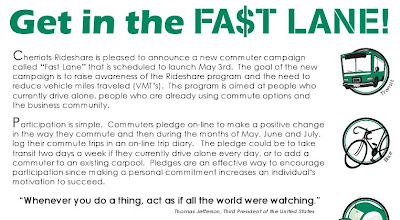
As Salem considers new road projects and the prospect of a third bridge across the Willamette River, we would do well to reflect on the example of the Hawthorne Bridge in Portland.
On Tuesday the
Rivercrossing Alternative Modes Study wrapped and issued
their final report (91pp pdf). The study contains a number of suggestions for improving walking and bicycling facilities and for making it easier to walk and bike.
All of the suggestions are good ones, and they should be pursued independent of the proposed highway-style bridge. They are basic kinds of things that will help Salem renew its
bicycle-friendly status at a higher level. We hope the City will shoot for gold, not merely silver!

Rather than discuss the suggestions now in a block, we'll probably refer to them as relevant topics and places arise. It is not likely that any of them will surprise you, as none of them are especially novel, but it is good to see them collected as part of a plan.
Still, the plan could be more ambitious. (For previous analysis see
here and
here.) The goal of the study's recommendations is
to reduce SOV [single-occupant vehicle or "drive alone"] travel over the Willamette River in Salem by 8 percent or more in the future planning horizon year (2031) over currently projected traffic volumes.
For comparison let's look at a different bridge, the Hawthorne Bridge in Portland.
Portland: Bike Rush Hour on the Hawthorne Bridge from
Streetfilms on
Vimeo.
Over at Bikeportland,
a couple of slides from National Bike Summit presentation on Portland's bike strategy show the way that bikes save money. By dramatically growing total traffic volumes without an increase in motor vehicle volumes, the increase in bicycling improves total mobility without requiring costly road widening.

The captions in italics are from Portland's slide commentary.
The total number of vehicles on the Hawthorne Bridge has increased 20% since 1991…This increased demand for mobility is consistent with what most traffic models would predict, given increases in population and increased economic activity. This type of increased demand for mobility can spell problems for road users: more congestion, more delay and less travel reliability.
The next slide breaks out the 20% increase by mode share.

Notice the red line: The trendline for motor vehicles is
flat. Bicycling has absorbed the growth!
In the case of the Hawthorne Bridge, the negative effects of congestion have been kept at bay. Because, while the number of vehicles increased 20% between 1991 and 1998, that increase has been almost wholly in bicycle traffic.
The comments go on to contrast this result with the expected results of prevailing traffic analysis and engineering:
Had the increase been—as it might be in most places—automobiles, then the intersections at either ends of the bridge would likely have failed in their ability to effectively and efficiently move traffic.
The engineering solution to this type of congestion would have been to widen the intersections, add more travel lanes to the bridge, add more green time to the movements onto the bridge. In reality, because there are scant funds for such improvements, nothing would have been done and the costs would have been those of increased congestion.
Since bicycle traffic and not car traffic has absorbed the increase, auto traffic proceeds unhindered.
However, because the increased demand for mobility has been borne almost exclusively by the bicycle, automotive traffic flows in this area the same today as it did in 1991. It is for this reason, in part, that Portland’s award winning traffic engineer, Rob Burchfield, states that: “Bicycling infrastructure is relatively easy to implement and low cost compared to other modes. It is by far the most cost-effective way to provide for personal mobility in an urban transportation system.”
Some people have objected that west Salem is significantly more hilly than inner southeast Portland, and therefore that geography inherently makes bicycling in this area of Portland more likely than in west Salem. They say that it is not realistic to expect similar increases in Salem bicycling. This assumption is ratified in the Rivercrossing Alternate Modes Study, which supposes an 8% shift in all modes, not merely bicycling - nowhere close to Portland's 20%.
A more interesting question than the rhetorical one "why biking
won't be more popular" is "what would it take for bicycling to be
more popular?"
What would it take to get that 20% shift in Salem bicycling across the river?
When we consider that a new bridge is a $500M proposition, we might ask ourselves, what would 10% of that applied to bicycling accomplish? Could we spend a dime in order to save a dollar? What would a $50M investment in bicycling yield?
Would it yield 20%?
Unfortunately we don't know the answer. The transportation planning already postulates, already assumes as a given, that the only worthwhile and effective form of mobility - the only mobility for which we have to plan - is the single-passenger auto.
What truly is the cost-effectiveness in mobility among the different options? This question has not been asked in any serious way. Hopefully ODOT and others will start "least-cost" planning soon.















































